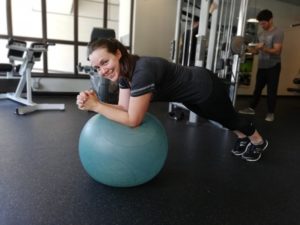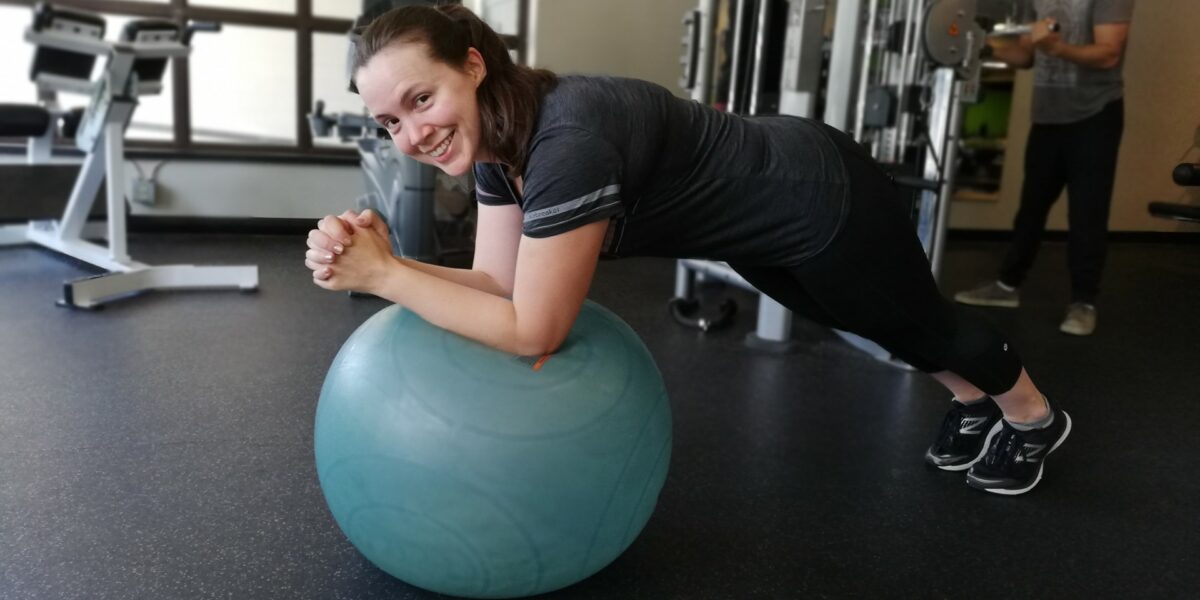Do I need to Train my Core?

It is impossible to step into a Vancouver personal training gym without hearing a trainer talk about the core! Core exercise has been a hot topic in the health and fitness industry for many years. So which core exercises are best and why is it so important!?
Improving your core strength will not only help you appear leaner by tightening and flattening your stomach, but vastly improve your overall fitness level. Having a strong and functional core will help prevent injuries, ease low back pain, improve posture and positively impact your athletic performance – think better golf swing or a faster 5 km run time!
So what exactly is your core? Many people still confuse the core with the abs. The core refers to the Lumbo-Pelvic Hip Complex. Wow! Now that’s a mouthful! Let us explain… this complex refers to the muscles of the hips, lower back, the glutes, pelvic floor and most importantly: The Transversus Abdominis. This is the deepest layer of the inner abdominal muscles. It wraps around your torso like a corset. One of the main jobs of the Transverse Abdominis is to stabilize your spine.
You can think of your core (or you can call it the lumbo-pelvic hip region if you’re feeling fancy!) like a box around your torso. This box acts like the foundation for the rest of your body. Much like a foundation for a house. The core muscles work to stabilize the center of the body so that the arms and legs have a stable platform to work from.
The abs are the superficial “six pack” muscles that lie in the front of your stomach.
It is known fact that having a strong and functional core is more important than having bigger arm and legs muscles. So why exactly?
Injury Prevention:
The core plays key role in everyday tasks. Before you pick a toddler up off the floor or carry groceries in from the car your core should be engaging first to stabilize your spine. When lifting weights in the gym you should have a strong core for the same reason. Core strength here will help you lift the weights with proper form and technique. Also avoid compensation from the wrong muscles and create exceptional movement patterns.
Improved Athletic Performance:
Developing your core strength and stability can immensely maximize your power, speed, coordination, balance, agility and overall functional fitness.
A 2009 study from the official research journal of The National Strength and Conditioning Association (NSCA) found just that! They studied two groups of runners. One group underwent 6 weeks of core specific training, made up of 5 core exercises done 4 times a week. The other group did not strength train the core at all. The study concluded that people who underwent 6 weeks of core training considerably improved their 5000 meter run time than those who did not strength train the core.
During an athletic feat, actively tightening your core muscles will improve the transfer of power to your extremities. Think about this next time you swing a golf club or when you hit the ski hill for the first time this winter!
Improved Posture and Back Pain:
Having poor posture and spending too much time in a seated position both can be risks factors for back pain. The core muscles work to hold your spine and pelvis in place, helping you stand and sit up straight. Also if the muscles surrounding your spine are strong, the vertebrae and discs of the spine will be better supported. Better functional movement in daily tasks, good posture and long term pain relief are often very welcomed results of having a stronger abdominal wall. We call that a win-win!
What Core Exercises are Best?
So as you can see training your core is highly important and key in creating the strongest, healthiest and most athletic version of yourself! So what kind of core exercises are best? Forget mundane crunches and sit-ups! When training the core keep functional exercise in mind. Perform core specific exercises in a wide variety of standing, kneeling, half-kneeling and plank positions. The best core exercises will challenge your core stability, rotation and anti-rotation. The Cable Wood Chop exercise for rotation, the “Pallof Press” for anti-rotation and the ever famous plank for core stability are excellent choices. Don’t forget to hold your body in one straight line when you’re planking! A personal trainer can determine which exercises are optimal for you. They will tailor a program to help you crush those core and fitness goals! Now let’s get a sweat on!

